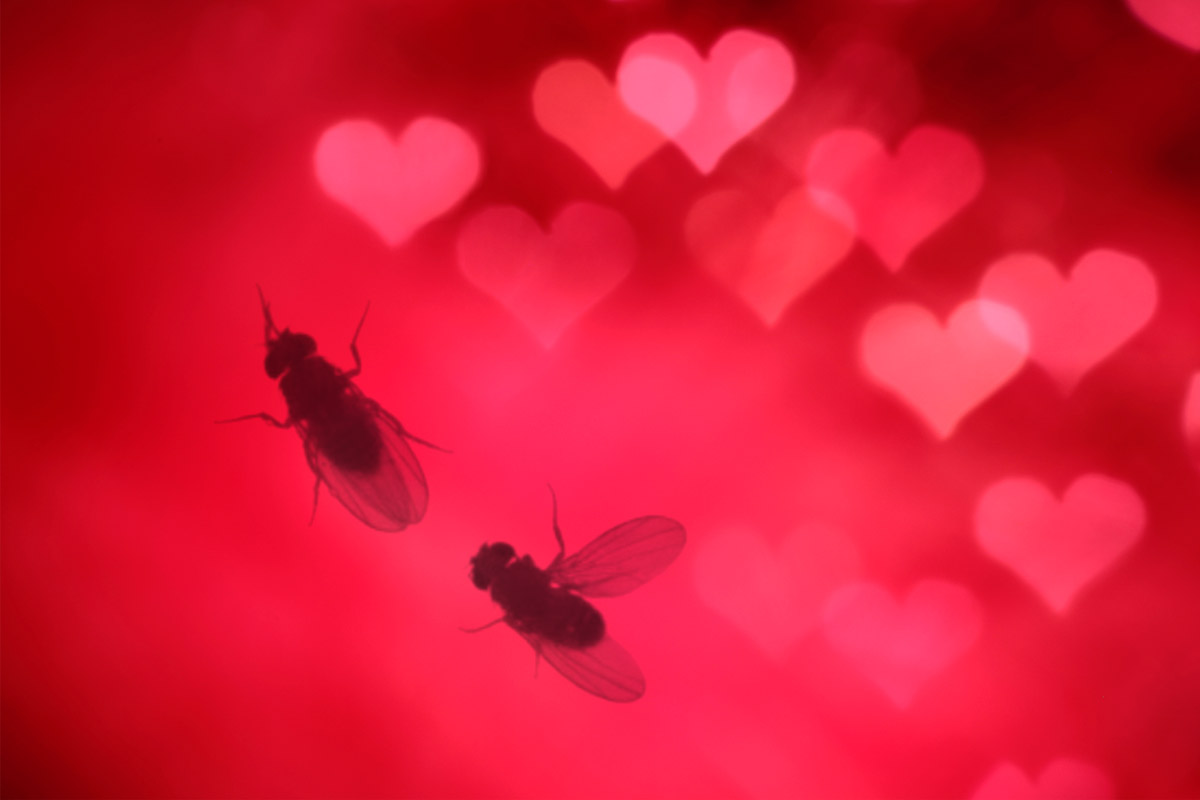
What are you doing for Valentine’s Day? Does it involve being loaded into a cartridge with a member of the opposite sex, then put in a soundproof chamber, where lights will flash and your romance will be recorded by a tiny individual microphone?
For the fruit flies in Yun Ding’s lab, Valentine’s Day is just another day in paradise. Ding studies their courtship behaviors to learn more about how the genes and brains evolve to change their behaviors.
The vast diversity in how living things act comes about through genes and nervous systems evolving to encode new behavioral patterns, Ding says, but we really don’t know much about how this works. Fruit flies are a great way to study this because one species, Drosophila melanogaster, has been a genetic model for over 100 years, and scientists have learned a lot about how its genes and neurons influence behaviors. There are about 1,500 described species of fruit fly, each with species-specific behaviors, which lets Ding make comparisons between species.
So, how do fruit flies romance their partners? Like humans, they have a variety of approaches. The males will follow the females, and touch her with their forelegs to taste if she is the right species. Then they may dance by circling around her, and “sing” by vibrating their wings. (That’s where the tiny microphones come in.) There is a great diversity of song patterns among species. Computers will translate these songs into sound waves, which lets Ding compare the songs of different species in a concrete way.
“One approach is to study at the genetic level, to see what the genetic differences are that call the animals to sing different songs,” she says. “If we can identify mutations, what kind of mutations are they? What kind of genes are involved? On top of that, if you see a very similar change in a different evolutionary node, would they involve the similar genes or the similar mutations?”
Ding and her lab are also searching for the neuronal basis for the behavioral differences. They manipulate the neurons in different fruit fly species that have different behaviors, to compare how the same neuronal element functions across species. They do this by creating transgenic flies—the lab’s fly nursery is a shelf of flasks and test tubes—which allow them to turn on and off specific neurons.
To turn on the neurons, the scientists use a technique known as optogenetics, where they can shed light on flies to activate certain neurons, and watch how the fruit flies act.
Ultimately, Ding is looking for what kind of genetic and neuronal mechanisms contribute to the evolution of animal behaviors, and to see if any common mechanisms emerge, on the way to explaining the biodiversity that fascinates her. “The nervous system is the product of millions of years of evolution,” she says. “It needs to be both things: robust enough to stand up to environmental perturbations, and flexible enough to evolve and generate adaptive behaviors.”
Whatever your Valentine’s Day plans, enjoy—and give some thought to why you’re doing what you do.



